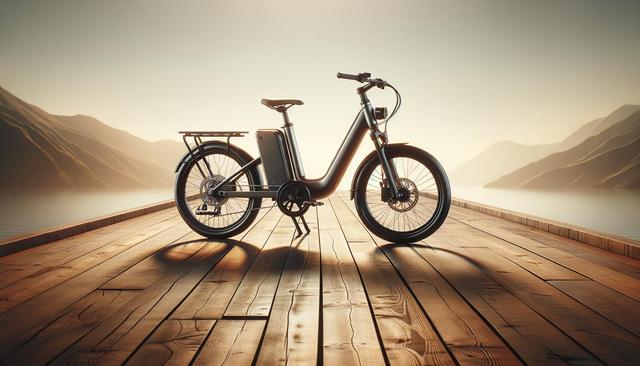Understanding the True Value of Budget-Friendly Electric Bikes
Electric bikes, often referred to as e-bikes, have become a practical solution for many looking to reduce commuting costs while minimizing their environmental footprint. While premium e-bike models can come with high price tags, a growing number of budget-friendly electric bikes are entering the market, making this technology accessible to more people. These affordable options still provide many of the core benefits of their higher-end counterparts, including pedal assistance, rechargeable batteries, and durable frames. For daily commuters or recreational riders, the value of a dependable, lower-cost e-bike lies in its ability to save on fuel, reduce public transportation expenses, and offer a smoother ride compared to traditional bikes.
The cost-savings over time often make budget-friendly e-bikes a smart long-term investment. Even when factoring in occasional maintenance and battery replacements, the cumulative savings from lower transportation and fuel costs can outweigh the initial purchase price. For those asking, “Are electric bikes worth the investment?” the answer often leans toward yes—especially when the upfront cost is manageable and the bike meets everyday needs.
Key Features to Look for in Affordable E-Bikes
When shopping for an electric bike on a budget, it’s important to identify which features are essential and which can be compromised without sacrificing performance. While top-tier models may boast high-capacity batteries and advanced gear systems, many budget-friendly electric bikes still offer reliable and efficient rides with more basic components. Some key features to look for include:
- Battery range: Look for bikes offering at least 25–40 miles per charge, depending on usage and terrain.
- Motor power: A 250W to 500W motor is typically sufficient for urban commuting and light hills.
- Frame material: Aluminum or steel frames offer durability without excessive weight.
- Pedal assist modes: Multiple levels of assistance allow for energy-efficient rides tailored to user preference.
Additionally, it’s helpful to consider the availability of spare parts and whether the bike is compatible with standard accessories like racks, fenders, or lights. Ease of assembly and user-friendliness of controls can also make a big difference in overall satisfaction, especially for beginners.
Comparing Cost vs. Benefit for Daily Use
To evaluate whether a budget-friendly electric bike is a worthwhile purchase, it’s important to consider the daily use case. For urban commuters, e-bikes can significantly reduce the time and cost associated with traffic, parking, and public transport. Over the course of a year, even a modestly priced e-bike can pay for itself through these savings alone. Here’s a quick breakdown of common cost-saving areas:
- No need for gas or monthly transit passes
- Minimal maintenance compared to cars or motorcycles
- Lower insurance and registration fees, if any
- Potential tax incentives or rebates in some regions
Additionally, the convenience of having a personal mode of transport may increase productivity and reduce stress. For those who ride frequently, the physical and mental health benefits of cycling—enhanced by electric assistance—also contribute to the overall value.
Challenges and Limitations of Budget E-Bikes
While budget-friendly electric bikes offer many advantages, they do come with certain limitations that prospective buyers should be aware of. For instance, lower-cost models might have smaller batteries, resulting in shorter ride ranges. This can limit how far you can travel before needing a recharge, which may not be ideal for longer commutes or rural areas with limited charging infrastructure. Similarly, some entry-level e-bikes may use less powerful motors, affecting performance on steep hills or under heavy loads.
Other trade-offs may include:
- Fewer customization options or integrated features
- Less advanced suspension systems, which can impact comfort on uneven roads
- Heavier frames, which may be harder to carry or store
Despite these drawbacks, many users find that the performance of budget models is more than sufficient for their needs, especially when the primary goal is simple, efficient commuting or light recreational use. Awareness of these limitations can help you choose a model that aligns with your expectations and typical usage patterns.
Making the Most of Your Electric Bike Investment
Once you’ve selected a budget-friendly electric bike that suits your needs, proper care and maintenance can help you maximize its value. Regularly checking tire pressure, brake function, and battery health can extend the life of your bike and ensure a safe riding experience. Charging the battery according to manufacturer recommendations and storing the bike in a sheltered area away from extreme temperatures are also important for long-term performance.
To further enhance your riding experience, consider adding affordable accessories such as:
- Rear racks or baskets for carrying groceries or gear
- LED lights for visibility during early morning or evening rides
- Phone mounts or GPS holders for navigation
- Comfortable seats or ergonomic handlebars
Joining local cycling groups or online communities can also provide useful tips on maintenance, route planning, and product upgrades. With the right approach, even a modestly priced e-bike can become a reliable and enjoyable part of your daily life.
Conclusion: A Smart, Sustainable Choice for Everyday Riders
Budget-friendly electric bikes present a compelling option for individuals looking to embrace sustainable transportation without overspending. While they may not include every premium feature, many models offer exceptional functionality, reliability, and cost-effectiveness for daily riders. For those questioning, “Are electric bikes worth the investment?”, the answer is often yes—particularly when factoring in long-term savings, convenience, and health benefits. By selecting a model that aligns with your commuting habits and maintaining it properly, you can enjoy the advantages of electric cycling on a budget.




Leave a Reply